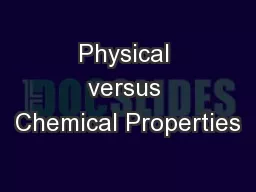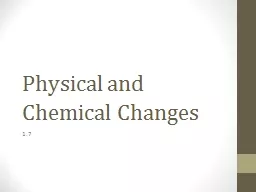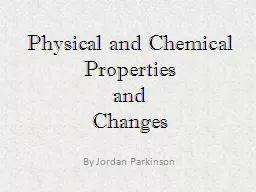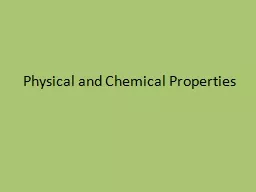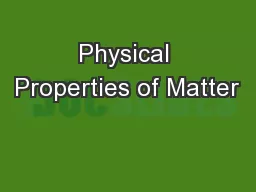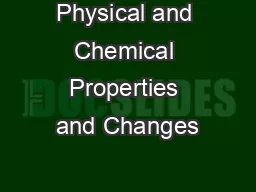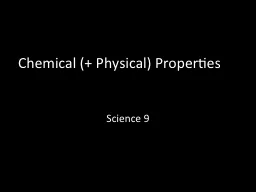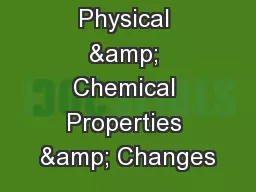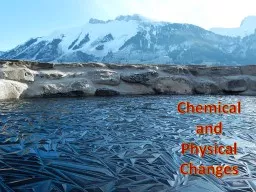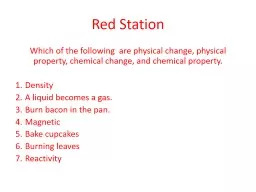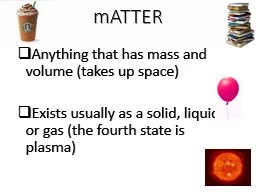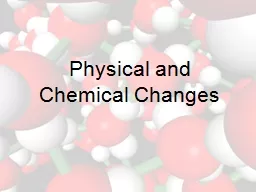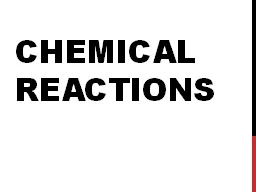PPT-Physical versus Chemical Properties
Author : mitsue-stanley | Published Date : 2018-02-28
Chapter 2 Section 2 Describing matter Matter anything that has mass and takes up space Mass the amount of matter in something Volume the amount of space something
Presentation Embed Code
Download Presentation
Download Presentation The PPT/PDF document "Physical versus Chemical Properties" is the property of its rightful owner. Permission is granted to download and print the materials on this website for personal, non-commercial use only, and to display it on your personal computer provided you do not modify the materials and that you retain all copyright notices contained in the materials. By downloading content from our website, you accept the terms of this agreement.
Physical versus Chemical Properties: Transcript
Download Rules Of Document
"Physical versus Chemical Properties"The content belongs to its owner. You may download and print it for personal use, without modification, and keep all copyright notices. By downloading, you agree to these terms.
Related Documents

